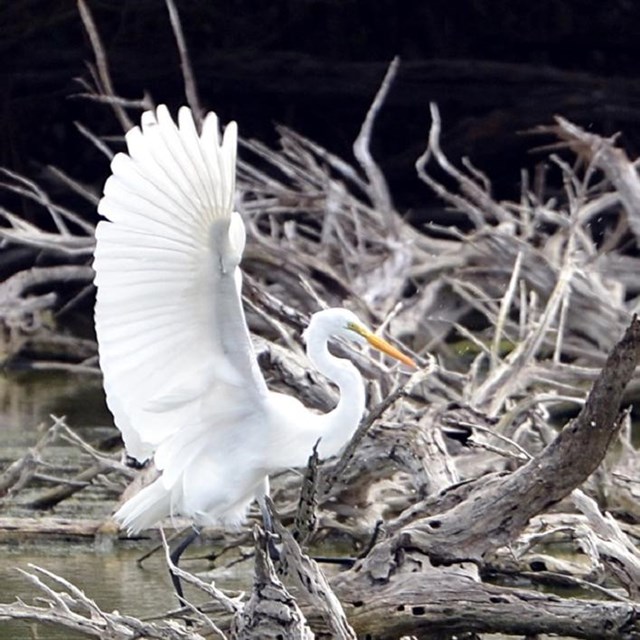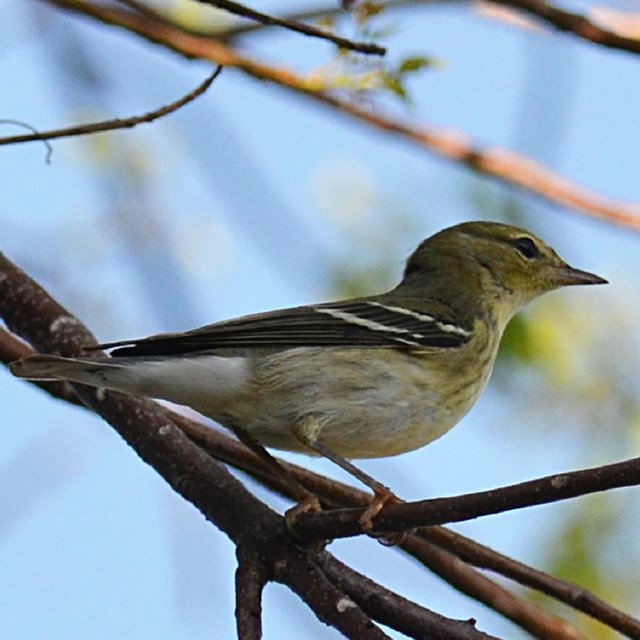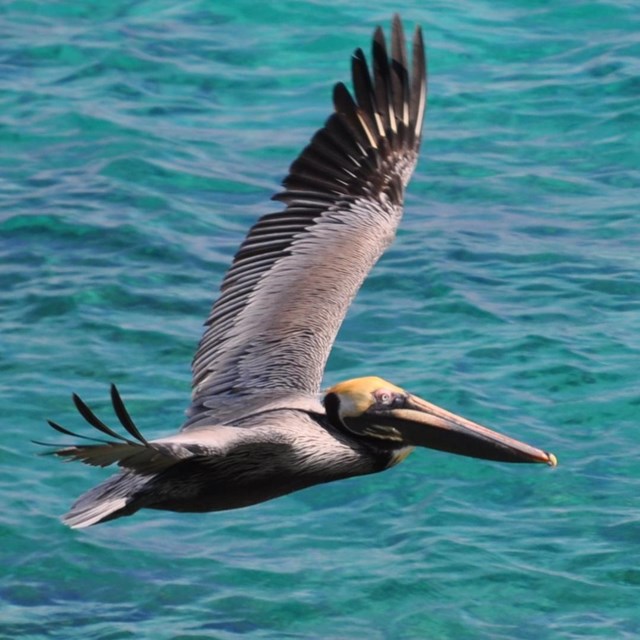
Black-necked Stilt (Himantopus mexicanus)These tall shorebirds are breeding residents throughout the Virgin Islands, Bahamas, Greater Antilles and Cayman Islands from March through October. They are easy to recognize by their long, pink legs and their black and white plumage, which has been compared to a tuxedo. Stilts can be very noisy and here in the Virgin Islands are referred to water dogs.
Willet (Catoptrophorus semipalmatus)The Willet is a large, grayish shore bird that is a rare migrant on St John. The wing pattern is a recognizable black and white pattern in flight.
Spotted Sandpiper (Actitis Macularia)This sandpiper is the most common of the migratory shorebirds on St John. It may show up as early as July and stay until June. When they first appear they can be seen with the spots of their breeding plumage, but in winter their spots disappear. They can also recognized by their teetering walk. These sandpipers can be found in salt ponds.
American Oystercatcher (Haematopus palliatus)This large bird is recognizable by its black hood and long, heavy orange-red bill, and pink legs. They are permanent residents on St. John, seen mostly on rocky coastlines. In the Virgin Islands they are known as the whelk cracker.
Blue-winged Teal (Anas discors)The blue-wing teal is the most common wintering duck in the Virgin Islands. Males have a white crescent on the face, and both ducks have a blue forewing, which is visible in flight. Often found in salt ponds with white-cheeked pintails.
Common moorhen (Gallinula chloropusThe gallinule, also known locally as moorhen, lives in fresh or brackish water associated with salt ponds or mangroves and feeds on vegetation and insects. It has dark gray to black feathers, a red bill with a yellow tip and big yellow feet that enables it to walk on floating vegetation.
Least Grebe (Tachybaptus dominicus)Grebes are from an ancient family of aquatic birds. The least grebe is small size and black in color. It prefers fresh water ponds but can be seen in some remote salt ponds.
Great Blue Heron (Ardea herodias)This is the largest heron in the Virgin Islands and can be recognized by its gray color and large size. The great blue heron is a winter migrant that can be found on offshore cays, coastlines and salt ponds.
Little Blue Heron (Egretta caerulea)Little blue herons start out white and gradually turn blue as they mature. They are permanent residents in the Virgin Islands. They are a medium-sized heron with a grayish-blue appearance. Found on coastlines or salt ponds.
Green Heron (Butorides virescens)The green heron is distinguished by its small size, dark coloration and orange legs. A common resident in most salt ponds where it feeds on fish, lizards and a variety of prey that it will sit very still for as it waits for the unwary prey to come near.
Yellow-crowned Night-Heron (Nyctanassa violacea)This medium sized heron is a permanent resident and can be identified by it's yellow crown and black and white head markings. Night herons have a big eye and thick bill suited for hunting land crabs at night. During the day they can be seen in mangrove trees where they rest.
Great Egret (Ardea alba)The great egret is easily recognize by its large size and white plumage. The great egret can be found on road sides, beaches or salt ponds. They eat a variety of prey including young iguanas. 
Snowy Egret (Egretta thula)The snowy egret is a medium-sized elegant white bird with a long neck, black legs and yellow feet. They wade in shallow water and spear fish and other aquatic animals. They sit and wait for something to swim their way.Distinguish this species from the great egret by looking for the yellow feet. 
Kung Fu PipersEmail us your wildlife photos and we may post them on our web site or social media pages. |
Last updated: September 9, 2022










